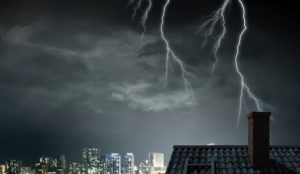Masonry chimneys are some of the oldest types of chimneys. If you own a historical American home, you likely have one in your home. Your masonry is built for strength and integrity, and it’s made to last many lifetimes. One thing that can shorten the expected lifespan of your masonry chimney is water damage. It is costly, dangerous, and a general pain in the neck.
Masonry
The reason why masonry is a brilliant option for chimneys but can be especially susceptible to water damage. Brick and mortar together are made up of many materials which are adversely affected by water, precipitation, and moisture. No matter what form it’s in, the water can get inside the masonry due to its porous nature. While this makes it easy for heat and gas to exit through the masonry, it also allows water in, which is never a good thing.
Water Damage
Your chimney is protected from water by a few things. The flashing, cap, and crown must be in place in order to do their part, but sometimes the flashing can shift, the cap can become damaged, and the crown can take on cracks and gaps. Over time damage occurs to parts which can be repaired or replaced, preventing water damage. It’s when routine maintenance is neglected that water leaks commonly occur. Water enters through a loose sheet of flashing, through a damaged chimney cap, or cracked crown, or even runs onto the masonry and leaves behind damage to the masonry itself.
Once water penetrates the system, the damage occurs swiftly and unseen. Efficiency drops, airflow slows, creosote and soot begin to buildup–and that’s not even the portions damaged by the water itself!
Water causes extensive and sometimes total damage to the chimney, including:
- Rusted assemblies and parts, including doors, hinges, and accessories
- Rotted wood, wall coverings, flooring, and more
- Stained masonry, walls, ceilings, floors, and ruined furniture
- Decayed interior and exterior mortar
- Deteriorated firebox assemblies and central heating system
- Collapsed hearth and possible chimney settlement and shift
- Leaks and damage throughout the home
Chimney Leaks
When you experience a leak in any other part of the home, it is likely caused by the chimney. The water enters through the chimney, but travels, unseen, inside ceilings, floors, and walls until it reaches the lowest point and forms a leak. A general contractor can repair the damage, but won’t fix the problem. Call a chimney sweep first when you experience a home leak, whether it’s right next to the chimney, or rooms away.
Signs of a Leaky Chimney
- A leak in any part of the home
- Sounds of dripping (even unseen)
- Darkened/discolored bricks
- White patches/streaks on bricks
- Cracked or crumbling masonry
- Rust Stains
- Smoky fireplace
- Damp odors/mold or mildew
- Water in the firebox
- Water stains on walls, ceilings, or floors
A chimney leak starts on the exterior. Visually inspect your chimney as often as you change the batteries in your smoke alarm, and schedule professional services regularly. A certified chimney sweep will catch a leak before it occurs, or months before a homeowner sees a sign of a problem.
Pristine Sweeps take leak prevention one step further with our waterproofing services. Call 206-574-8414 and ask about waterproofing your masonry today.
